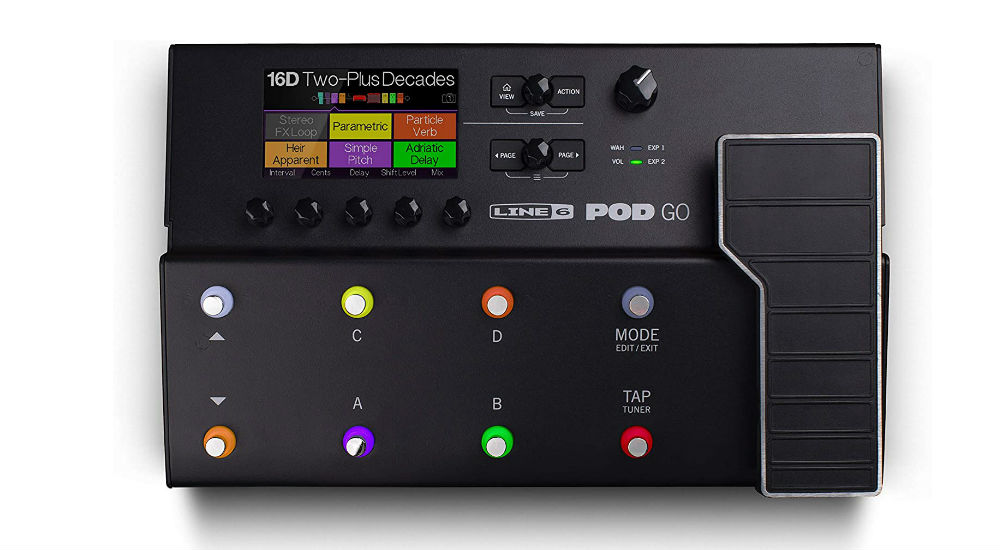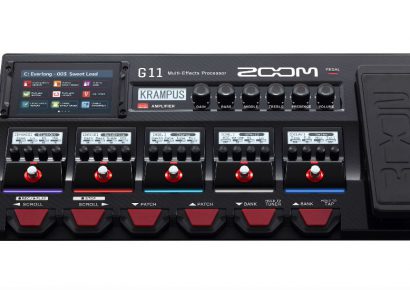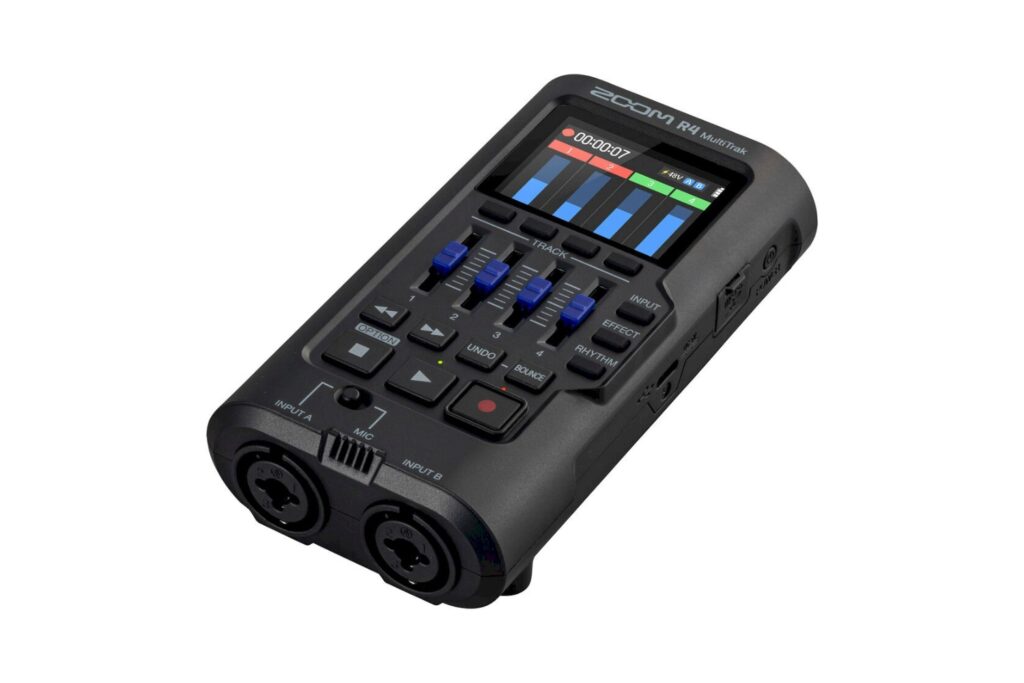POD Go is a small-ish ‘floor POD’ which clearly takes some cues from the revered Line 6 Helix line, with its bright full-colour screen, sparse layout and multi-colour-LED-ringed foot switches. But while the Helix is upfront about being one for the tinkerers, POD Go is purposely designed to be more simple and intuitive: a plug-and-play stomper for players who don’t necessarily want to go as deep with the editing and tweaking as the Helix’s interface might encourage. That’s not to say you can’t do deep editing if you want to, but the interface is more about surface simplicity.
There are five push encoders which function as the control knobs for your amp or effects models, eight foot switches and an inbuilt expression pedal, with the ability to add a second expression pedal or two external footswitches for even more control via jacks on the back panel.
The back panel also includes a stereo effects loop and balanced/unbalanced stereo outputs, an unbalanced amp output for sending the signal directly into the front end of a guitar amp (which you can choose to be tapped off directly before the cab/IR section so you can send a cab-emulated signal to the mixer and a non-emulated one to your amp), and the USB socket which lets you update your presets or firmware while also doubling as a multichannel 24-bit audio interface for Mac and Windows computers with DI, re-amping and MIDI functionality.
You can also use it as an interface to record to Apple iPad or iPhone devices. The effects loop can be used normally, or in ‘four cable method,’ or as an always-on Aux In for monitoring mixers, keyboards, drum machines or whatever audio device you want to feed into it.
POD Go has dozens of amp models including all the expected classics – your JCM800s and Plexis, your MESAs and your Fender Tweeds, plus more modern entries based on amps like the Friedman BE-100 and PRS Archon. There are also plenty of bass models along with a Studio Tube Pre model mic preamp. And of course, you have plenty of cabinets and the ability to load custom impulse responses.
POD Go has nearly all the effects of the HX family of modellers, as well as selected effects from the classic DL4TM, DM4TM, MM4TM, and FM4TM stompboxes and M13, M9, and M5 processors. We’re talking a couple dozen distortions and fuzzes, over a dozen compressors, a bunch of EQs, more modulation effects than you can throw a Cure album at; wah-wahs, delays, reverbs, pitch and synth models, filters, and weird-ass effects like Voice Box and Comet Trails.
Okay okay, but how does it feel? We know Line 6 is gonna nail the sounds by this point, but does it capture the nuance? Well, yeah! Just check out the sound samples on the POD Go section of the Line 6 website if you need proof. You’ll hear a variety of sounds that respond incredibly faithfully to differences in pick attack and fret-hand phrasing. Keeping in mind that POD Go seems to be aimed at players who don’t necessarily need all the super-modern trimmings of the Helix, it seems particularly suitable for those who are more used to a simple setup. If you’re the kind of player who likes to control their gain from the guitar’s volume knob, POD Go is definitely going to meet your needs.
I’ve always found that with Helix you’re tempted to really go deep with the effects and tricks. POD Go is still a very capable unit that can get complex if you want it to, but its simpler layout encourages directness in a way that gets you to focus on playing. It reinforces the whole ‘plug in and riff out for hours because it sounds so cool’ thing that got us all addicted to guitar in the first place.


